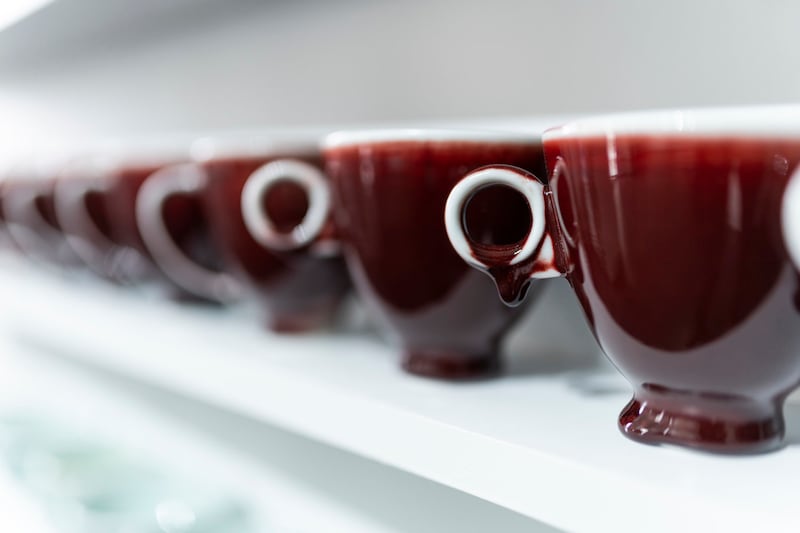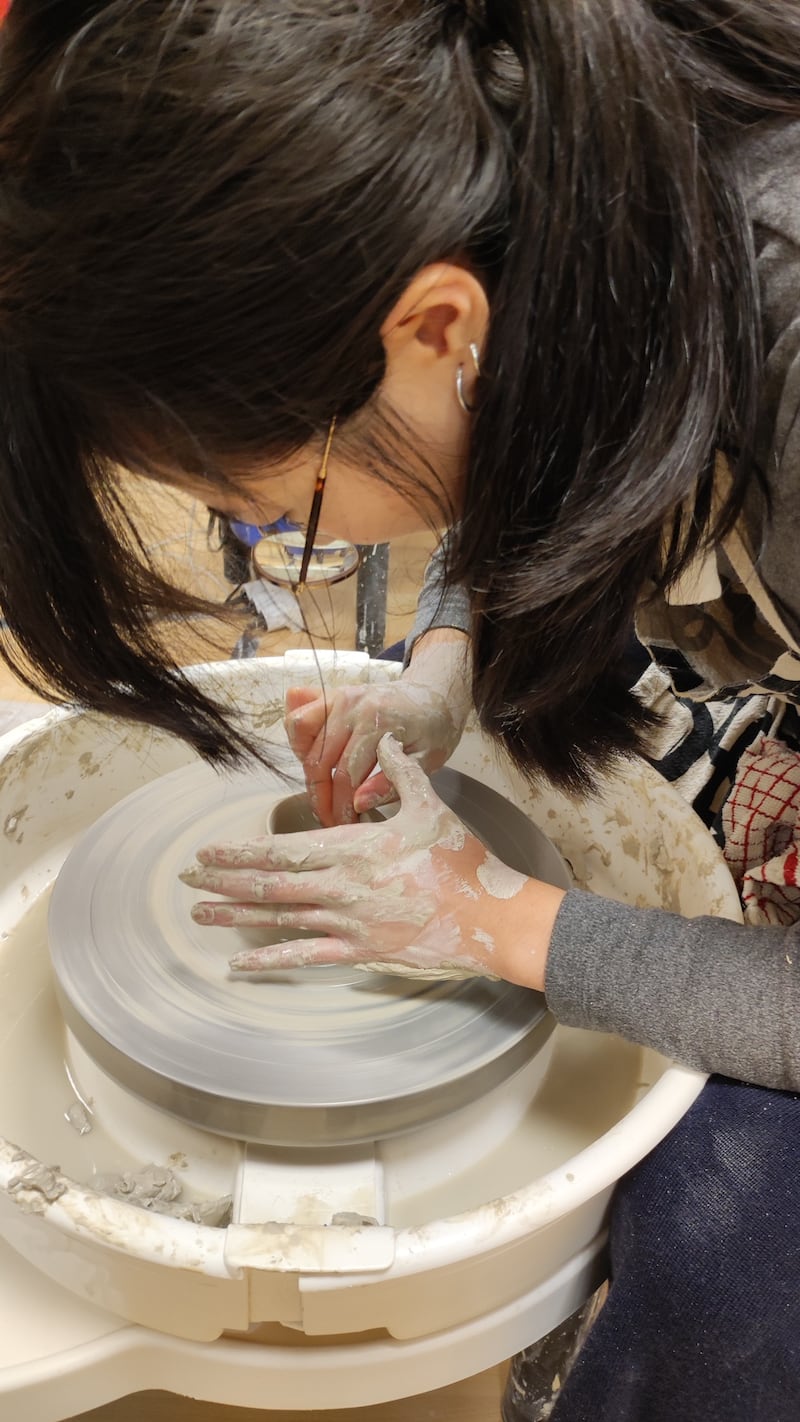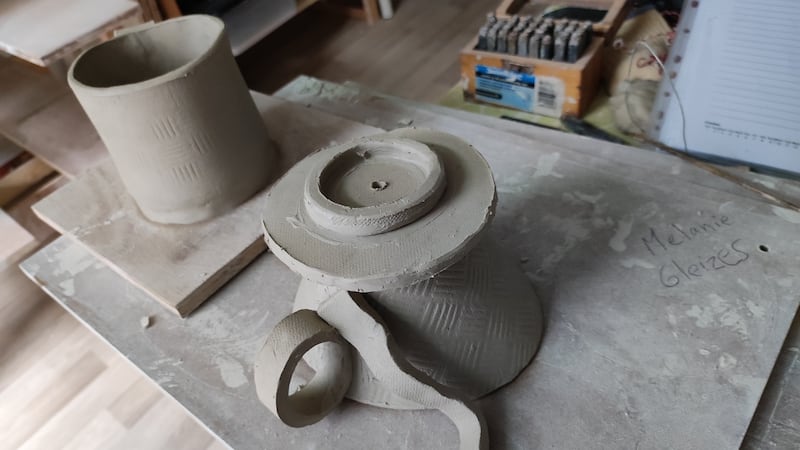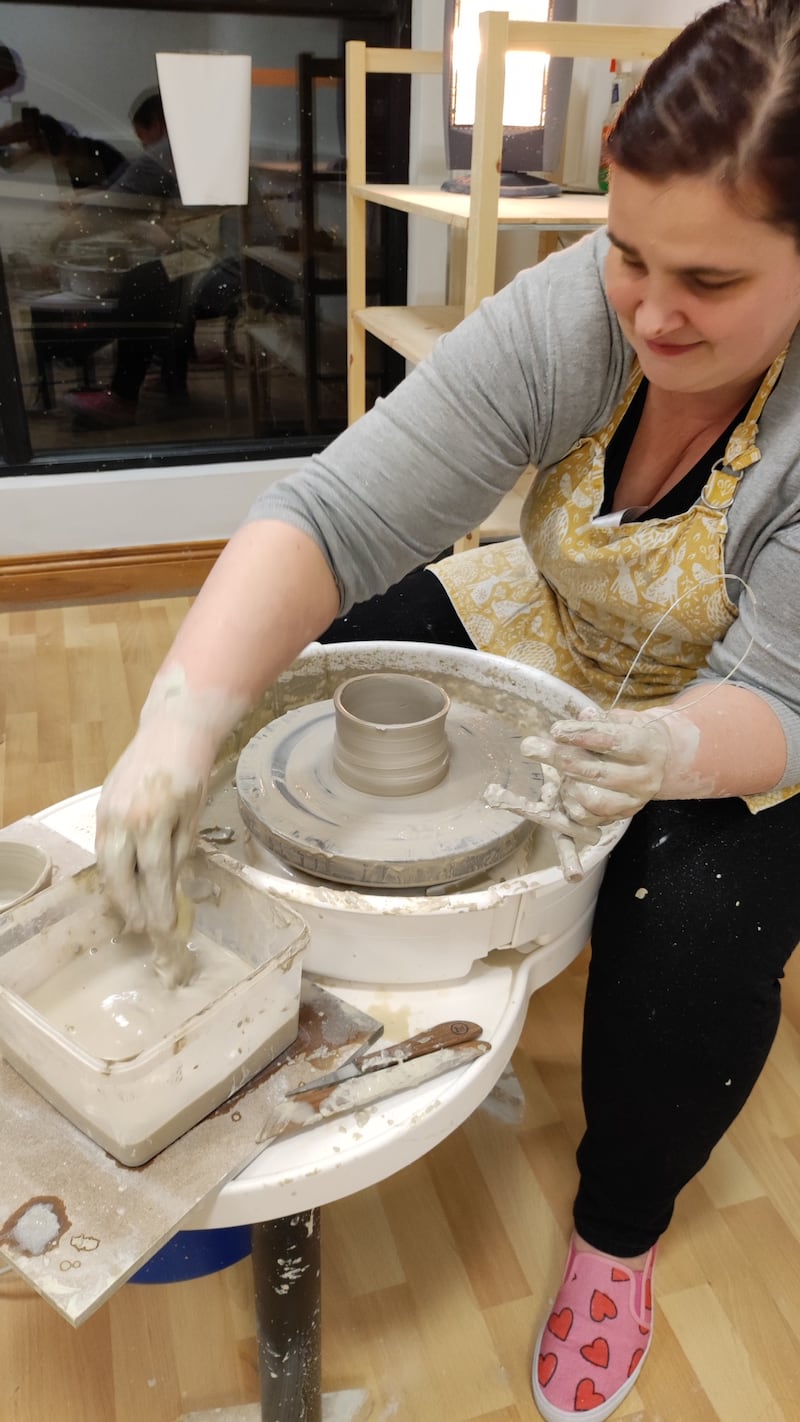Depending on your age, the idea of a potter’s wheel either calls to mind the (with hindsight) creepy charms of Patrick Swayze in Ghost, or the fun and games of the Great Pottery Throw Down; but ceramic artist and teacher Liselott Olofsson says it can become a real passion, as well as a career.
[ How to weave: Keep it simple and still turn out beautiful workOpens in new window ]
“The nicest thing about clay is that it’s so versatile and forgiving,” says Olofsson, who started out by making mud pies in the garden, before a teacher gave her real clay to play with. “That ignited a real passion, then someone told me that there was wild clay locally. I took a posse of kids to a field called Daly’s Hill and dug up a pink soft clay, which I carried home in plastic bags.”

That sounds a bit organic for me. Is there an easier way to begin?
Of course. Olofsson now shares her love of the stuff at Kilkenny’s Clay Rooms, along with fellow amazing makers Aisling Mc Elwain and Niamh Synnott. Clay Rooms is just one of the studios around the country where you can have a go, such as Dublin’s Arran Street East (arranstreeteast.ie). Olofsson then went on to train at the National College of Art and Design, but one of the lovely things about clay is you can have fun from the outset, starting with pinch pots, coil pots and the like.

So I don’t have to get on the wheel at all?
Not if you don’t want to, but you might find you like it. “I feel very centred when I’m on the potter’s wheel,” says Olofsson. “Having that space just to focus on what’s in front of you is special. Clay is a magic material. Allowing it to air dry gives you a different material to work with. At this stage, there are so many possibilities and the clay can be reused or recycled without any waste. Then the process of firing the clay in a kiln transforms it into something very durable and useable.”
READ MORE
[ How to be a conductor: Seek out mentorships and maintain your skillsOpens in new window ]
Can anyone do it then?
“Anyone can use clay, from a toddler to a septuagenarian. It is soft and easy to manipulate either on a potter’s wheel or using the hand-building technique, the only limit is the imagination.” The thing is, although you can do plenty of experimentation at home, your clay won’t be usable unless you fire it in a kiln.

Kilns sound a little alarming
They can be. Even a small home kiln is going to cost upwards of €1,000, and only the very smallest will run off domestic power, so until you discover you’re the next Louis Mulcahy, Nicholas Mosse or, indeed, Liselott Olofsson, you’re better off making your work in a studio that has a kiln. When you get to the next step, Olofsson also suggests Fire Station Artist’s Studios in Dublin, where you can hire kiln usage (firestation.ie).

And what about the whole glazing thing?
Don’t glaze over just yet… That’s the final stage, where you add colour and shine, and enter a whole new world of slipping, dipping, dripping, stippling and sponging; and raku, crackle, sgraffito and salt. But that’s another story.
Classes at The Clay Rooms start at €60, and look out for the Pots and Prosecco sessions for couples for Valentine’s Day, plus mug making workshops for Galentines and Palentines, who simply want to celebrate friendship (clayroomskilkenny.ie / liselottolofsson.com)













